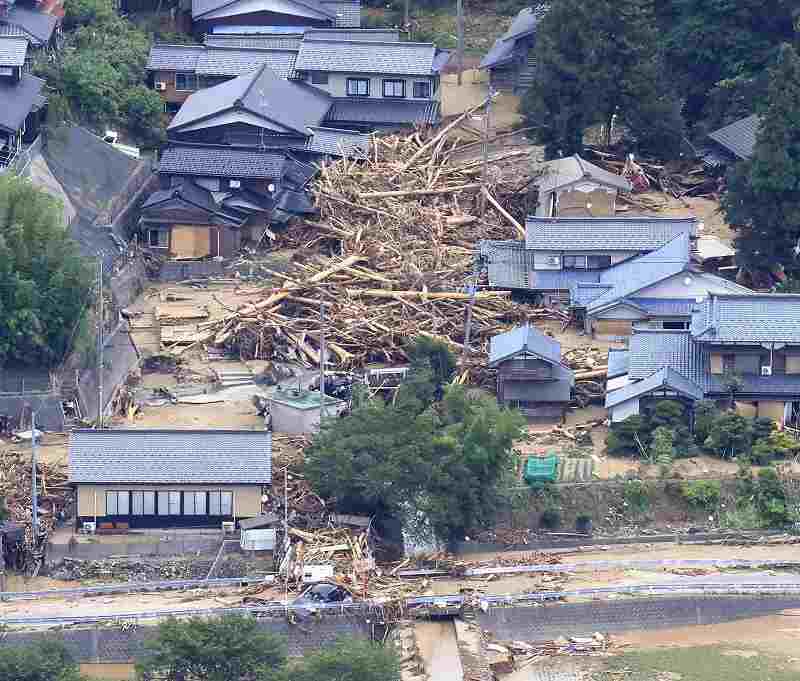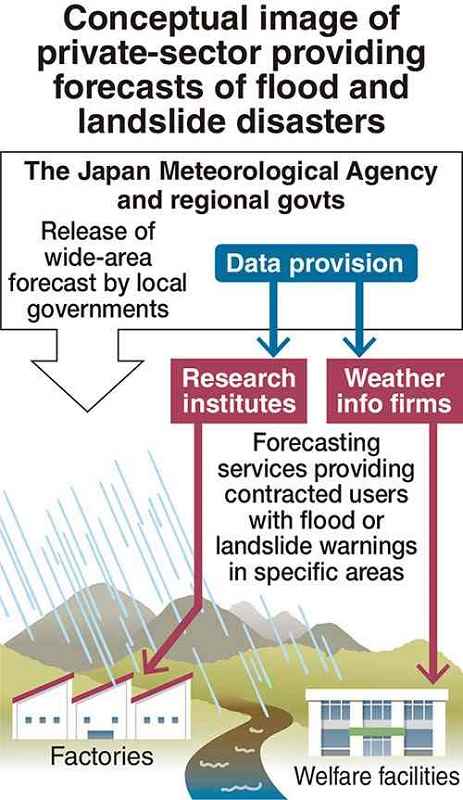Ban to be lifted on private weather firms providing forecasting services related to floods, landslides

Landslide devastates a residential area in Murakami, Niigata Prefecture, on Aug. 5.
20:00 JST, August 29, 2022
The Japan Meteorological Agency has decided to lift a ban on private weather-information companies and others from providing part of its forecasting services related to flood and landslide disasters.
Forecasting services have, thus far, been handled by the central and local governments in a centralized manner. The agency will allow the private sector to provide forecasts, though only to specific users with whom they have contracts, and the ban will be lifted as early as next fiscal year.
While the number of natural disasters caused by localized torrential rains and other phenomena is increasing, there is a limit to providing accurate forecasts for specific small areas. By allowing the entry of the private sector, the agency will encourage the provision of more detailed information in response to disaster risks in individual areas.
The provision of weather forecasts requires a government license under the Meteorological Service Law. With the regulations eased following the law’s amendment in 1993, the ban has already been lifted in six fields, including forecasts for weather, tidal waves, and high seas.
The government had previously decided not to permit the provision of forecasts for floods and landslide disasters because such forecasts are a matter of life and death and erroneous forecasts can cause confusion. But, thanks to improvements in the forecasting techniques of the private sector, the agency has decided to allow it to do so.
The technical standards required for the license are being formulated, and applications will be accepted as early as next fiscal year. The expected operators include major weather information companies such as Japan Weather Association and Weathernews, as well as research institutes.
However, because the provision of forecasts that are widely disseminated to residents would be linked to evacuation decisions, this will continue to be the responsibility of the central and local governments.
In one possible scenario, private companies that receive data on rainfall and river levels from the central government will analyze the topography of specific areas and independently forecast flooding and landslides. The information will be provided to welfare facilities located near mountains and factories near rivers that are under contract to the weather companies.
Localized torrential rains caused by the occurrence of linear precipitation zones tend to concentrate victims in certain areas.
In the landslide disaster that occurred in Hiroshima Prefecture in 2014, a total of 77 people were killed in Asakita and Asaminami wards of Hiroshima City alone. In 2016’s Typhoon No. 10, all nine residents of a group home for those suffering from dementia perished when a river overflowed in Iwaizumi Town, Iwate Prefecture.
To deal with such situations, weather forecasts and evacuation calls need to be customized for specific small areas, which is a difficult task for central and local governments.
In the case of landslide disasters, the topography and soil characteristics of each region are not taken into account.
From 2014 to 2019, approximately 9,000 landslide disaster warnings were issued, but only 13.7% of the cases actually occurred in the region they were issued for.
In the approximately 21,000 rivers managed by the central and prefectural governments, the governments can release no more than the actually measured water levels in most cases. They can issue flood forecasts for only 2% of the total.
The agency has said “it is difficult for the public sector to make forecasts based on the actual conditions of individual mountains and small to medium-size rivers,” and hopes that the inclusion of the private sector will encourage people to take action sooner and help to mitigate possible damage.





